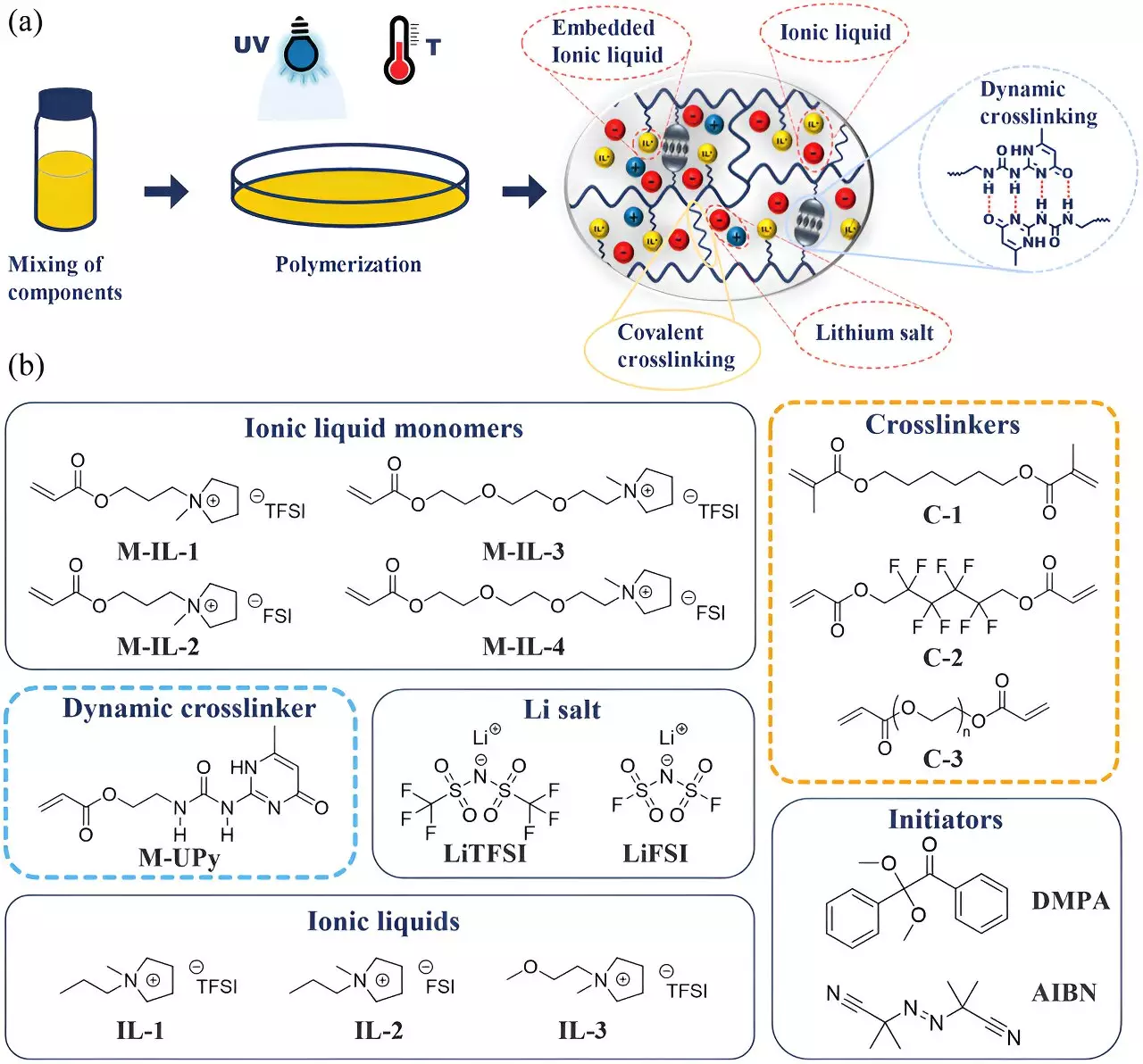The quest for safer and more efficient energy storage solutions has led to significant advancements in battery technology, particularly in the realm of lithium-ion batteries. Researchers at Martin Luther University Halle-Wittenberg (MLU) have recently unveiled an innovative gel electrolyte that promises to enhance the performance, safety, and longevity of lithium-ion batteries. This groundbreaking development addresses longstanding issues associated with traditional liquid electrolytes, including their flammability and risk of leakage, thereby paving the way for a new generation of batteries.
Lithium-ion batteries have become the cornerstone of modern energy storage, powering everything from smartphones to electric vehicles. Their popularity stems from their ability to charge quickly and provide substantial power. However, the very electrolytes that enable these batteries to function are fraught with risks. Traditional liquid electrolytes pose a significant fire hazard if a battery is damaged. This risk has provoked researchers to rethink the fundamental design of battery components.
Professor Wolfgang Binder, leading the Macromolecular Chemistry Research Group at MLU, notes that while conventional batteries utilize highly flammable liquid electrolytes, advancing to a safer modality is critical. The recent development of a gel-like polymer that encapsulates the electrolyte serves as a viable solution, blending the conductive properties of liquids with the thermal stability characteristic of solid polymers.
Dr. Anja Marinow, a chemist involved in this research, elaborates on the innovative polymer’s structure. By developing a gel that retains the electrical conductivity needed for ion transfer while enhancing safety, the researchers tackled the crucial challenge of stabilizing battery operation at high voltages. Unlike previous attempts to use gels in lithium-ion applications—often stymied by inadequate performance—the MLU team’s research integrates an ionic scaffold within the polymer’s molecular framework. This scaffold not only allows for efficient ion transport but also enhances the battery’s overall integrity.
Initial lab experiments have yielded promising results. The gel electrolyte remains stable at voltages exceeding 5 volts—a remarkable achievement considering the stability threshold for standard lithium-ion configurations hovers around 3.6 volts. This advancement indicates that future batteries could operate at higher efficiency, thus offering improved performance metrics.
Sustainability Considerations and Future Prospects
Environmental sustainability is imperative in modern battery development. The MLU researchers have designed their gel in a manner that simplifies the recycling and disposal process—a crucial factor as the world grapples with electronic waste issues. As lithium-ion batteries proliferate in various applications, ensuring those that reach the end of their lifecycle can be efficiently processed is essential to minimizing environmental impact.
Though the research is promising, it’s important to acknowledge that extensive long-term studies must be conducted before these gel electrolyte batteries can transition into mass production. The initiative forms part of a broader project, “BAT4EVER,” which collaborates with universities and industries across Europe to further develop battery technology.
The collaborative nature of this research speaks volumes about the interdisciplinary approach towards tackling global energy challenges. The involvement of various institutions in Germany, Belgium, Luxembourg, Italy, Spain, and Turkey underscores the initiative’s international significance. The establishment of the European Center for Just Transition Research and Impact-Driven Transfer (JTC) at MLU aims to advance inquiries not only into energy storage but also into areas like circular economy practices, promoting a paradigm of sustainable innovation.
The development of new gel electrolytes by researchers at MLU marks a significant turning point in lithium-ion battery technology. By addressing safety issues and enhancing performance, this innovative approach stands to revolutionize how energy storage systems are built and utilized across industries. As this research continues to evolve, it holds the potential to transform not only the battery landscape but also broader sustainable practices in energy consumption.


Leave a Reply